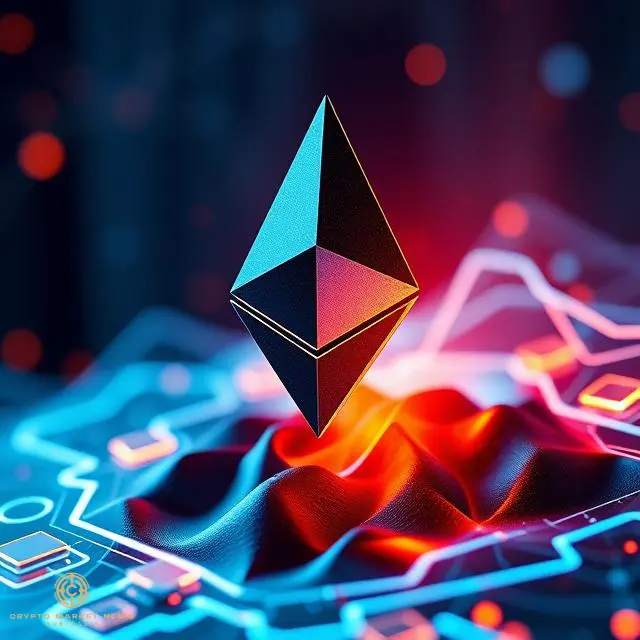Since the introduction of blockchain technology by Bitcoin in 2008, the decentralized payment network has taken on roles across a number of industries. It also powers diverse applications like NFTs, Web3, the metaverse, GameFi, DeFi, and others. With more blockchain ventures coming into the mainstream, scalability becomes the biggest challenge.
Layer 1 networks like Bitcoin and Ethereum have dominated crypto market news and will continue to do so. That said, they face limitations, lagging behind when it comes to transaction speed compared to traditional systems. With the implementation of Layer 2 solutions, security, scalability, speed, and decentralization will be enhanced. Here is how Ethereum’s Layer 2 projects are set to become a dominant factor.
What is a Layer 2 Crypto Protocol?
When discussing a Layer 2 blockchain, we are referring to the scaling solutions that are critical for improving not only the scalability but the performance of existing Layer 1 blockchains. For Ethereum, one of the biggest names in the DeFi (decentralized finance) market, this shift will be game-changing.
Layer 2 protocols will operate atop the primary blockchain. It should lower transaction costs, boost throughput, and substantially lower congestion. Think of them as express lanes in the current blockchain. It should supercharge the performance of the Ethereum blockchain.
How Does a Layer 2 Network Work?
The core principle of Layer 2 networks is off-chain transaction processing. This leads to a consolidation of summary transactions on the main blockchain. The approach will reduce processing times, lower transaction costs, and substantially ease network congestion.
Layer 2 protocols will act as a dedicated traffic management system. These protocols will divert transactions off the main blockchain and process them separately. The offloading of these processes should drastically reduce congestion while also lowering fees, increasing throughput, and creating faster transaction times.
The Key Advantages of Layer 2 Scaling Solutions
The advantages offered by Layer 2 solutions will offer a litany of benefits to the Ethereum ecosystem. In the end, it should play a pivotal role when it comes to making Ethereum more efficient and accessible for both developers and users alike.
Scalability
The single most important advantage to the Ethereum Layer 2 projects. These solutions allow for a greater number of transactions per second, drastically cutting down on congestion within the Ethereum main net. This should lead to lower transaction costs and drastically improved network speed.
Improved User Experience
At the heart of virtually any industry is user experience. Though Ethereum values have soared, network performance has become a negative. By implementing Layer 2 protocols and reducing costs while improving speed, the entire user experience should become more accessible and seamless for developers and users.
Security
Safety is always at the forefront of the mind of users. Even major coins like ETH and BTC suffer security breaches from time to time. By implementing Layer 2 solutions, the existing security properties of Ethereum will be improved while maintaining its decentralization principles.
Lower Fees
Cost plays a role in virtually any walk of life. Though there is a lot of money to be made on the blockchain, fees have become an issue. Through the use of off-chain transactions, users will incur substantially lower gas fees, making it more cost-effective to utilize the Ethereum network than ever.
The Most Popular Ethereum Layer 2
Ethereum has been working to pioneer several promising Layer 2 projects. Each of them offers distinct advantages while taking a unique approach. Of the numerous Layer 2 projects issued by Ethereum, these should significantly enhance its network in the short- and long-term.
Optimism
Using optimistic rollups, Optimism remains arguably the most popular Ethereum Layer 2 protocol. Optimism enables low-cost, high-speed transactions by combining multiple transactions and then broadcasting them as a single transaction on the Ethereum blockchain.
Optimism also uses fraud proofs within the challenge time to ensure that each transaction is authentic. It will support a wide range of DeFi Apps while also being compatible with the Ethereum Virtual Machine. This will enable easier migration when it comes to decentralized apps. Finally, there are the reduced gas fees when compared to the Ethereum mainnet.
Polygon
Polygon will be a multi-chain solution. It will have a framework for creating and integrating Layer 2 sidechains and solutions. The goal is to establish a blockchain internet that is not only scalable but flexible enough to accommodate a wide array of use cases.
Polygon will offer EVM-compatible sidechains. It will also include a wide adoption of NFTs, DeFi, and gaming, among other things. Finally, it will include support for both ZK-Rollups and Optimistic Rollups as well. Polygon is perhaps one of the most ambitious Layer 2 solutions coming to the Ethereum blockchain.
Arbitum
Another Optimistic Rollup solution, Arbitum will focus on increasing scalability while also lowering transaction fees. Arbitum will support EVMs, which will allow developers to deploy existing Ethereum contracts with fewer changes far more easily.
Using a different execution engine, Arbitum should create improved performance through higher transaction speeds and lower fees. It is already gaining popularity in both NFT marketplaces and among DeFi projects. The robust security model should also present greater security thanks to fraud proofs.
zkSync
Built on ZK-Rollups comes the zkSync Layer 2 protocol. zkSync employs zero-knowledge proofs in order to assure the validity of each off-chain transaction. At the same time, zkSync will not only lower transaction costs but will also increase scalability of the Ethereum blockchain as well.
Utilizing ZK Proofs, the zkSync protocols will support stronger security guarantees. In the face of security challenges in crypto, these developments will make the Ethereum blockchain even safer. This protocol will also support both atomic payments and swaps, plus the near-instant transaction finality will come with very minimal fees, estimated to be a fraction of a penny.
StarkNet
This Layer 2 solution will also employ ZK-Rollups. StarkNet will offer a general-purpose framework meant for scaling smart contracts. With lower expenses and higher speeds, transactions will be handled at a much more robust rate than previously possible. Remember, each of the protocols being implemented has scalability in mind in some way, shape, or form.
StarkNet will work to support complex smart contracts, allowing them to be deployed seamlessly and without network congestion. It will also offer scalability for applications that traditionally require higher computational resources to execute. Through the use of advanced cryptographic proofs, transaction validation becomes more secure and transaction validation times are shortened.
In both the short- and long-term, Ethereum Layer 2 solutions are going to play a role in not only the growth of Ethereum but in the world of blockchain technology as well. It will address major challenges in scalability while allowing Ethereum to hold its position as one of the leading platforms in blockchain-based solutions and decentralized applications.
The more that these solutions grow, evolve, and gain traction, the better they will be for unlocking the true potential of decentralized applications. Moreover, these developments will foster a broader adaptation of existing blockchain technology. The Ethereum network will become faster, cheaper, safer, and more efficient while creating a more user-friendly and accessible blockchain ecosystem. This is truly a special time in the history of Ethereum.

